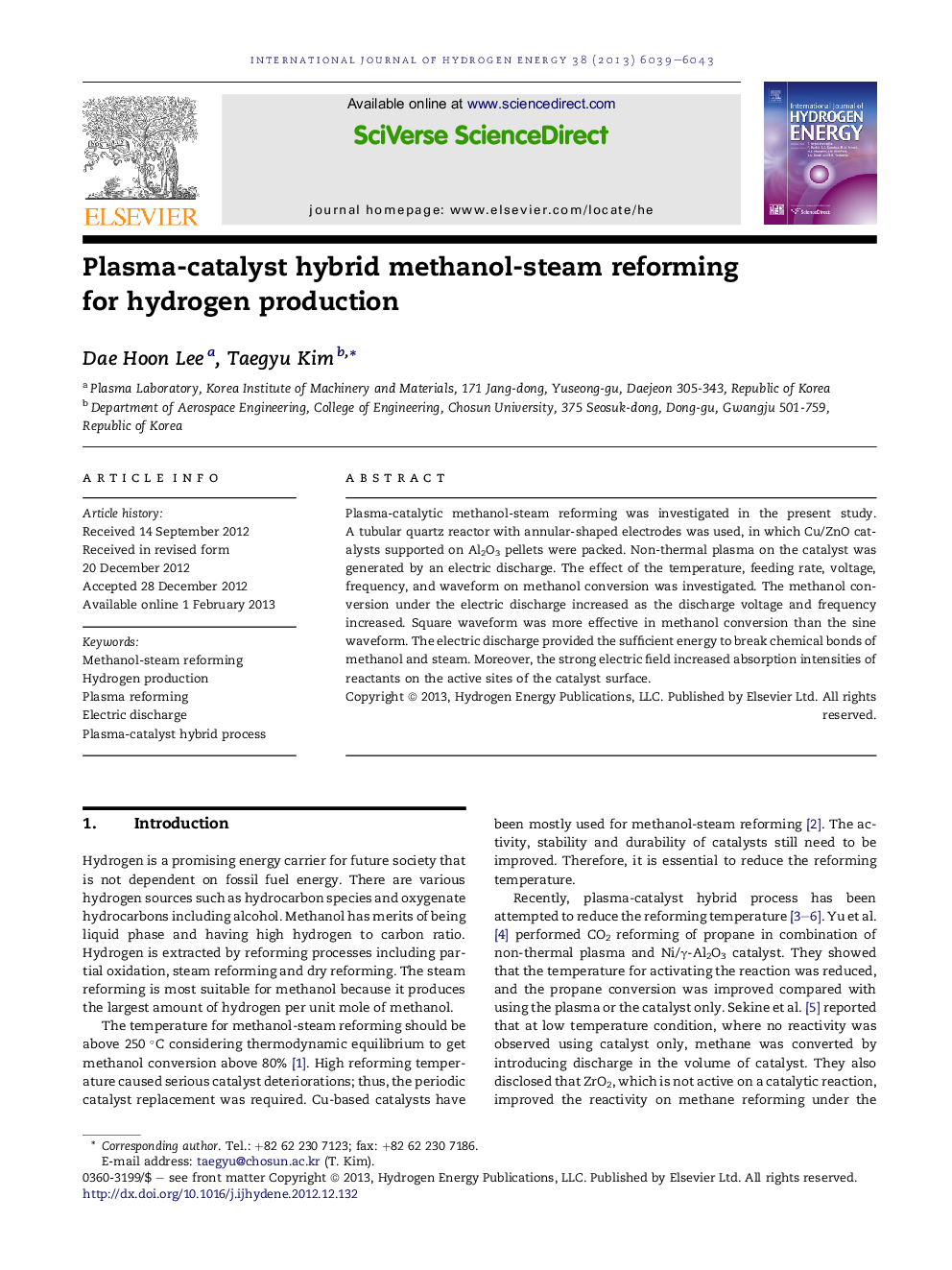| Article ID | Journal | Published Year | Pages | File Type |
|---|---|---|---|---|
| 1281718 | International Journal of Hydrogen Energy | 2013 | 5 Pages |
Plasma-catalytic methanol-steam reforming was investigated in the present study. A tubular quartz reactor with annular-shaped electrodes was used, in which Cu/ZnO catalysts supported on Al2O3 pellets were packed. Non-thermal plasma on the catalyst was generated by an electric discharge. The effect of the temperature, feeding rate, voltage, frequency, and waveform on methanol conversion was investigated. The methanol conversion under the electric discharge increased as the discharge voltage and frequency increased. Square waveform was more effective in methanol conversion than the sine waveform. The electric discharge provided the sufficient energy to break chemical bonds of methanol and steam. Moreover, the strong electric field increased absorption intensities of reactants on the active sites of the catalyst surface.
► Methanol-steam reforming was performed using the plasma and the catalyst simultaneously. ► Effect of temperature, feed rate, voltage, frequency, and waveform on methanol conversion was investigated. ► Methanol conversion under the electric discharge increased with increasing the voltage and frequency. ► Electric discharge provided the sufficient energy to break chemical bonds of methanol and steam.
